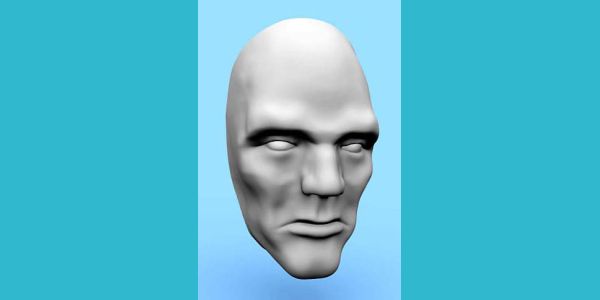Grant is the Principal of the Victorian College of Classical Homeopathy in Melbourne Australia. Both Grant and his partner Louise have done intensive research into miasms and their influence on facial features. This research has been applied clinically since 1999 and is now a recognized diagnostic method to determine a patient’s miasm.
Background
In 1999 as part of an ongoing project with undergraduate students about the practical application of miasms in clinical prescribing, some of the works of Allen and Roberts were examined. Both these authors mentioned facial features throughout their works on miasms. Hahnemann’s great work Chronic Diseases had already been studied in detail and it was clear that he advocated the inclusion of the miasm in chronic prescribing.
- Why, then, cannot this vital force, efficiently affected through Homeopathic medicine, produce any true and lasting recovery in these chronic maladies even with the aid of the Homeopathic remedies which best cover their present symptoms (1)
- by the employment of medicines more suitable for this miasm, he is enabled to render more essential service and almost invariably to effect a perfect cure (1)
But how was the miasm to be recognized? Boenninghausen posed this question.
- we have not so far any certain signs by which we can distinguish certainly the domain of one miasma from that of the other(2)
Hering determined that the miasm was so difficult to define that he dropped the idea entirely and used symptom totality alone to choose a remedy. Many Homeopaths followed on from this idea well into the twentieth century.
Allen like Hahnemann knew that without the miasm a simillimum was far more difficult to find.
- The fact is, we can not select the most similar remedy possible unless we understand the phenomena of the acting and basic miasms (3)
Allen and Roberts left us with some tantalizing suggestions about the effect on facial structure of the miasm.
- In the tubercular patient…the face and head is often seen to be the shape of a pyramid (3)
- How generally we see the landmarks of one of these chronic miasms stamped upon the organism. We see it in every feature and every physiological process; in the shape and contour of the body; upon the visual expression, the face, nose, lips, ears, mouth, upon the hair, its growth, lustre and general beauty or lack of it…(3)
- The appearance of people suffering from the syphilitic stigma often tells the story at a glance, for we observe that the head is large and bulging, the hair is moist, gluey, greasy… (4)
Foubister also took into account appearance as part of his clinical research into the offspring of mothers suffering from cancer during the 1950’s. This information forms part of his picture of the remedy Carcinosin
- These children presented a remarkably similar appearance, having blue sclerotics, a cafe au lait complexion and numerous moles (5)
A branch of medicine popular in the late nineteenth and early twentieth century was heredosyphilis; the study of the offspring of patient’s suffering with syphilis. It was noted that these children often displayed the following features (6)
- Cupped teeth
- High arched palate
- Depressed bridge of the nose or saddle
- Domed forehead
- Wide-set eyes
Using these small pieces of information, the research project into the influence of facial features by miasm was commenced. All of this information was validated through clinical practice in the following manner –
Patients who had received a successful constitutional result for a chronic condition from a polychrest remedy such as Sulphur (psora), Thuja (sycosis) and Mercury (syphilis) were examined to determine the relationship between their facial features and their miasm.
Very quickly a pattern emerged and the features that were allocated to these three primary miasms were used for subsequent patients when choosing their constitutional remedy.
Using the three primary miasms as the foundation four other miasms were added as per the following diagram. It was already well established that the tubercular miasm was a result of the combining of psora and syphilis (two dissimilar diseases of equal strength)
- (as the syphilis is at least as strong as the psora), the two join together (7)
The cancer miasm is a result of the combining of psora, sycosis and syphilis (three dissimilar diseases of equal strength)
If the tubercular miasm and the cancer miasm are a result of the combining of dissimilar diseases then psora/sycosis and syphilis/sycosis must also create their own miasm.(8)
Hahnemann stated that when dissimilar diseases of equal strength came together they would form a new disease. Based on this theory there can only be seven miasms.
During this same period a number of polychrest remedies were examined to determine their miasmatic dominance. Using repertory searches of rubrics and comparing materia medica pictures, further remedies were classified and many of them clinically verified against a patient’s facial analysis.
The results of this research were published in 2003 in Appearance and Circumstance by Grant Bentley.
Between 2003 and 2006 we continued to teach this method to our students and showed the method to a number of practitioners in Australia, New Zealand and Europe. To help practitioners in their analysis of faces a second book was written and published in 2006, Homeopathic Facial Analysis – A Companion Guide to Appearance and Circumstance by Grant Bentley. Using photos and sketches this book demonstrates the many varieties of feature structure, shape and size and how they can be determined miasmatically.
Professional Impact
Every Homeopath wants to find the simillimum for their patient as quickly as possible and many dedicate their lives to understanding materia medica at a deep level to find remedies for their patients. However the polychrests are medicines of many uses and they are difficult to understand without years of practice and even then they will surprise in their variety of presentations. HFA (Homeopathic Facial Analysis) can offer the profession two important avenues for success. Firstly experienced practitioners, classically trained can easily add HFA to their clinical practice to confirm their remedy choices. In Chronic Diseases Hahnemann was not suggesting a change in how we find the simillimum, only that we needed an addition. Standard classical repertorising includes both mental, general and physical symptoms as an attempt to achieve totality. All of these methods continue to exist with HFA so experienced practitioners need only learn the addition of this diagnostic tool to complement their existing practice.
HFA offers much needed support to the newly graduated Homeopath for while patients are prepared to show a degree of tolerance it is not exhaustible. For the new Homeopath without an earned reputation Homeopathy poses the difficulty of finding the simillimum quickly. Most patients are prepared to give their practitioner two, three or four attempts before feeling any benefit, but they are not prepared to give the five, six or seven often required before the simillimum is achieved. This is the downfall of Homeopathy for the new practitioner because it means a staggered hit and miss, up and down clinic for some years before becoming established. In fact many graduates find they cannot continue because their patient ratio doesn’t improve quickly enough to make professional Homeopathy viable.
HFA addresses this problem because once the miasm is identified and a good case along classical lines has been taken, relief for the patient is often only a couple of remedies away and many times significant relief is obtained from the first prescription. This helps build quick reputations, professional confidence and patient lists.
Philosophy
HFA has great rewards for both the pragmatic Homeopath as well as for the more philosophical. For the pragmatist it offers the most accurate objective diagnostic tool Homeopathy has ever produced. For the philosopher it offers a deeper understanding into not only the patient but in defining what Homeopathy actually is. HFA philosophy reforms the way miasms are viewed and redefines our interaction with them which provides an insight into the human condition.
These insights obtained through clinical practice are currently being written for publication in 2007.
Practical Application
- Case takingThe patient’s case is taken including their biography, current presenting complaint, history of complaints and generals (temperature reaction, time reaction, sleep, menses, perspiration, appetite etc)
- RepertorisationThe case taking information is analyzed and translated into six to nine rubrics covering the totality of the case. The rubrics required number no more than three mentals, three to five generals and one physical rubric that is the most unusual. Many of the rubrics chosen will contain from 20 to 500 remedies. This blend of rubrics is then repertorised using Homeopathic software. Using such large rubrics will bring to the practitioner’s attention a range of polychrest remedies. Even where more then twenty remedies repertorise, our miasmatic diagnosis will cull the group down to only three or four remedies. This is because on average only one seventh of the presenting remedies will be of consideration.
- Facial analysisAt the end of the consultation photographs (digital) are taken of the patient showing all aspects of their facial structure. A minimum of five photographs are taken and each feature is examined to determine to what extent that feature has been influenced by one of the three primary miasms. All features effected by a miasm are then tabled and the final miasm is determined by the dominance of either a single miasm (psora, sycosis, syphilis), or a combined miasm (tubercular, syco-psora, syco-syphilis, cancer)
- Remedy selectionThe repertorisation is examined and only the remedies belonging to the same miasm as the patient are taken into consideration. Where two, three or four remedies are presenting from the patient’s miasm, the materia medica is checked to determine the most likely simillimum.
Using this method we are obtaining consistent and strong results of up to 80% across a wide range of pathologies. Even students with only their undergraduate training as experience are obtaining results usually not seen until a practitioner has many years of clinical knowledge. See case ) on the college website.
REFERENCES
- Hahnemann Samuel, Chronic Disease:Their Peculiar Nature and Their Homeopathic Cure, B Jain Publishers, New Delhi, India
- Boenninghausen CMV, The Lesser Writings, B Jain Publisher, New Dehli, India, 1994
- Allen, JH, The Chronic Miasms Vol. 1 – Psora and Pseudo-Psora, Author 1910, reprint B Jain Publishers, New Delhi, India
- Roberts H, The Principles and Art of Cure by Homeopathy, Health Science Press, Whitstable, Kent, 1942
- Foubister, Donald, The Carcinosin Drug Picture, MacRepertory Reference Works
- Stokes, John H, Modern Clinical Syphilology: Diagnosis, Treatment, Case Studies, WB Saunders, Philadelphia 1926
- Hahnemann, Samuel, Wheeler, CE (trans.) Organon of the Rational Art of Healing, J M Dent and Sons, London, 1913
- Bentley, Grant, Appearance and Circumstance, Pennon Publishing, Melbourne, Australia, 2003
—————————————————————-
GRANT BENTLEY
ND Dip Hom Grad Dip Psych.Th Prof Memb AHA AROH reg ATMS ANPA
Principal of the Victorian College of Classical Homeopathy since 1995 Grant has enthusiastically taught and researched Homeopathy during that time. His first book Appearance and Circumstance was published in 2003 followed by Homeopathic Facial Analysis in 2006. He is currently writing his third book showing how miasms are reflected in all aspects of structure, behaviour, life events and time.
LOUISE BARTON
Dip Hom Prof Memb AHA AROH regd
Louise Barton has been in clinical practice since graduating in 1996. She was involved in the Australian Homoeopathic Association (Vic) from 2001, both organising seminars and as President from 2002 – 2004. She teaches at the Victorian College of Classical Homeopathy and has been involved with miasmatic research and the production of her partner Grant Bentley’s book Appearance and Circumstance and Homeopathic Facial Analysis.
Training
For further details and training opportunities, visit www.vcch.org






